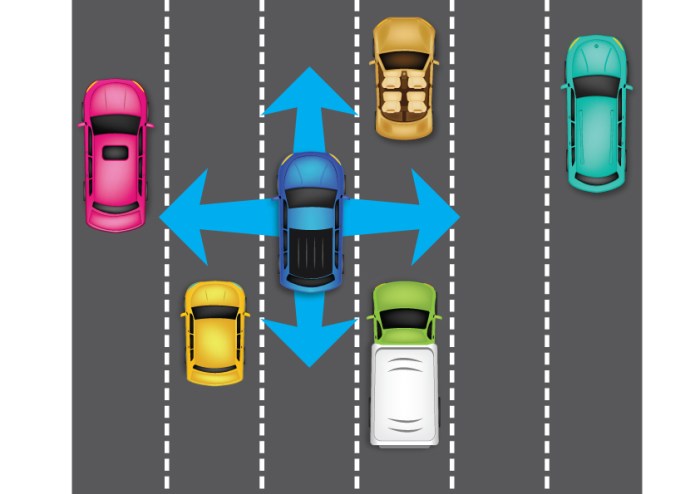A good space cushion is not likely to prevent all accidents, but it can help. Maintaining a safe distance between vehicles while driving is crucial for reducing the risk of rear-end collisions and other types of accidents. This article will explore the concept of a good space cushion, the factors that affect it, the consequences of an inadequate space cushion, techniques for maintaining a good space cushion, and the legal implications of an inadequate space cushion.
By understanding these factors, drivers can make informed decisions about how much space to maintain between their vehicles and others, thereby enhancing road safety for themselves and others.
Definition of a Good Space Cushion: A Good Space Cushion Is Not Likely To

A good space cushion refers to the safe distance maintained between vehicles while driving. It is essential for providing ample time to react to unexpected situations, such as sudden stops or lane changes, and to avoid rear-end collisions and other accidents.
Factors Affecting a Good Space Cushion
The appropriate distance between vehicles varies depending on several factors:
- Speed:Higher speeds require a larger space cushion to allow for increased stopping distances.
- Road Conditions:Wet, icy, or slippery roads require a greater space cushion due to reduced traction.
- Visibility:Poor visibility, such as fog or heavy rain, necessitates a larger space cushion to compensate for reduced sightlines.
Consequences of an Inadequate Space Cushion
Failing to maintain a good space cushion can have severe consequences:
- Rear-end Collisions:The most common consequence is rear-end collisions, where the following vehicle crashes into the vehicle ahead due to insufficient stopping distance.
- Increased Risk of Accidents:An inadequate space cushion limits reaction time and maneuverability, increasing the risk of accidents in emergency situations.
Techniques for Maintaining a Good Space Cushion, A good space cushion is not likely to
Drivers can employ various techniques to maintain a good space cushion:
- Three-Second Rule:Leave at least three seconds of following distance behind the vehicle ahead.
- Adjust for Conditions:Increase the space cushion in adverse conditions such as rain, snow, or fog.
- Use Landmarks:Use fixed objects, such as poles or road signs, as reference points to maintain a consistent distance.
Legal Implications of an Inadequate Space Cushion
Failing to maintain a good space cushion can have legal implications:
- Traffic Citations:Law enforcement may issue citations for following too closely or failing to maintain a safe distance.
- Insurance Liability:In the event of an accident, drivers who fail to maintain a good space cushion may be held liable for damages.
Quick FAQs
What is the three-second rule?
The three-second rule is a simple technique for maintaining a safe space cushion. To use the three-second rule, choose a fixed object on the road ahead, such as a sign or tree. When the vehicle in front of you passes the object, start counting.
You should reach the object at least three seconds after the vehicle in front of you.
What are the factors that can affect the distance between vehicles?
The distance between vehicles can be affected by a number of factors, including speed, road conditions, and visibility. In general, the faster you are driving, the more space you need to maintain between your vehicle and the vehicle in front of you.
Similarly, if road conditions are poor or visibility is limited, you need to increase your space cushion.
What are the consequences of an inadequate space cushion?
An inadequate space cushion can increase the risk of rear-end collisions and other types of accidents. If you do not have enough space to stop your vehicle in the event of an emergency, you may rear-end the vehicle in front of you.
An inadequate space cushion can also make it difficult to avoid other hazards on the road, such as pedestrians or cyclists.

